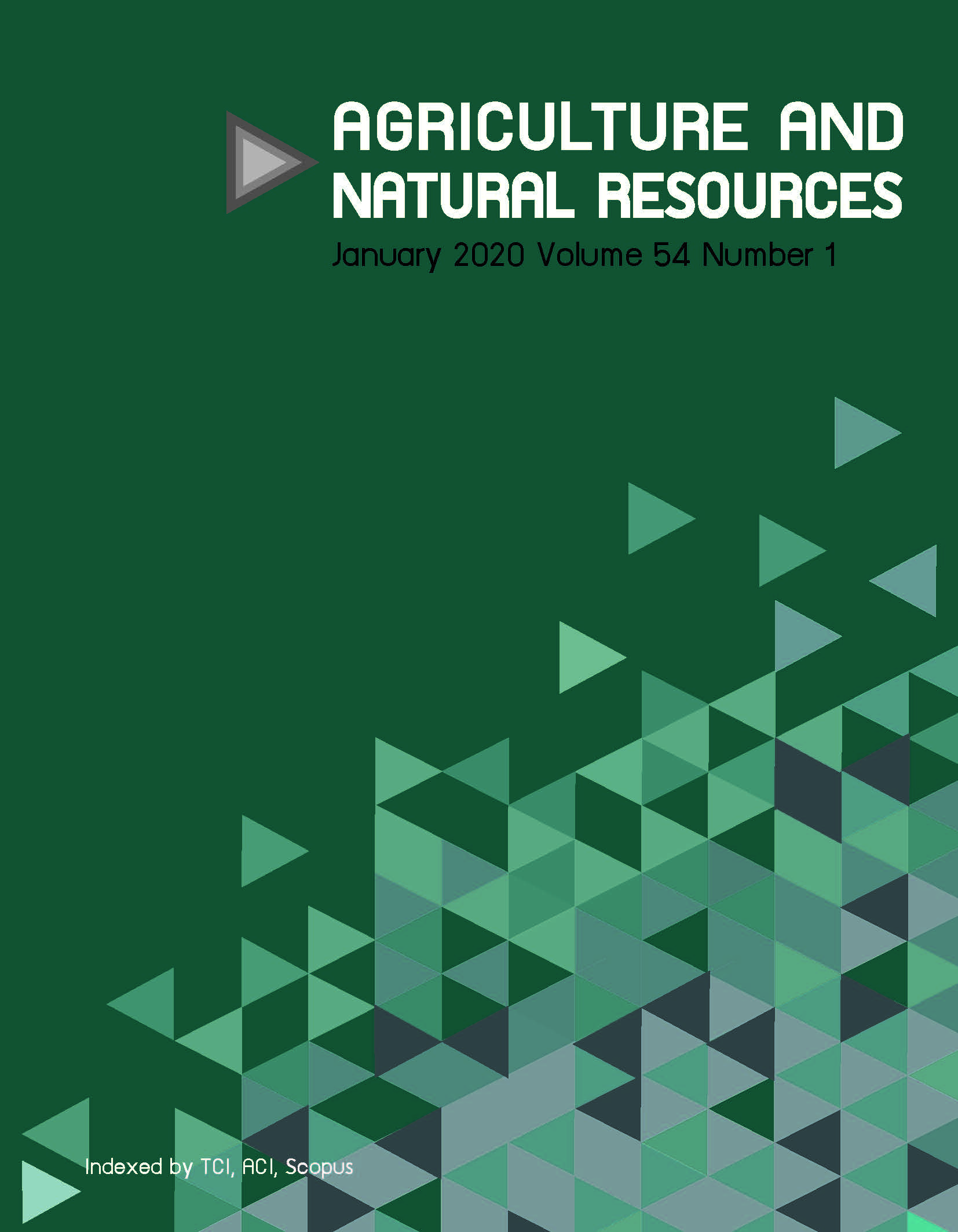Comparison of frog diversity between paddy fields with chemical and non-chemical use in Nong Khai province, Thailand
Keywords:
Anurans, Chemical contaminants, Frog compositions, Frog species richness, Rice fieldAbstract
Rice is the most commonly cultivated crop in Southeast Asia and it has many natural pests. Fertilizers and pesticides are often applied to the paddy fields to encourage growth and to control pests; several publications have reported that these chemicals can have adverse effects on the physiology and development of anuran amphibians. However, until now, the effect of these chemicals on frog diversity in paddy fields has not been studied. Therefore, this study compared frog diversities between paddy fields involving chemical and non-chemical use. Four pairs of paddy fields (where each pair consisted of a paddy field using chemicals and a paddy field not using chemicals) in Nong Khai province, Thailand were selected as the study sites. The surveys were conducted once a month along five strip transects per paddy field site during June to November 2014. Although, chemical compounds were used in four chemical paddy fields, frog diversities were close and frog compositions were also similar between paddy field types. Moreover, the results of non-metric multidimensional scaling showed that frog compositions tended to be grouped according to the locations of study sites rather than the paddy field types. Although this study found similar frog assemblages between types of paddy fields, this also indicated that frogs dwelling in paddy fields cannot avoid chemical contaminants in the paddy field habitat. Therefore, long-term monitoring needs to be conducted to determine the accumulative effect of chemical contaminants on paddy field frog assemblages so that conservation planning can be appropriately developed for frogs dwelling in paddy fields.
Downloads
Published
How to Cite
Issue
Section
License
Copyright (c) 2020 Kasetsart University

This work is licensed under a Creative Commons Attribution-NonCommercial-NoDerivatives 4.0 International License.
online 2452-316X print 2468-1458/Copyright © 2022. This is an open access article under the CC BY-NC-ND license (http://creativecommons.org/licenses/by-nc-nd/4.0/),
production and hosting by Kasetsart University of Research and Development Institute on behalf of Kasetsart University.







